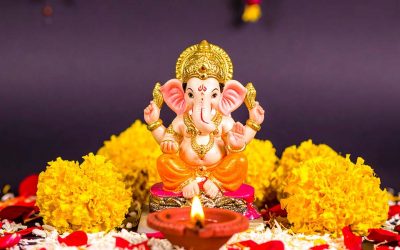Rituals of Sound: How Mantras Shape the Energy of Your Space
The Power of Mantra in Daily Life
Sound has such a substantial emotional impact. A happy tune can make you grin, and jarring sounds can leave you on edge or upset. Throughout history and across cultures and religions, people have attempted to incorporate certain sounds—mantras—into their lives to imbue them with focus, serenity, and clarity. But mantras aren’t limited to meditation purposes—mantras can be employed to control the energy of your environment, making it more peaceful and calm.
Learning about What is a Mantra
At its most fundamental, a mantra is a sound, word, or phrase utilized to facilitate concentration and intention. The word comes from Sanskrit, where “manas” (mind) is combined with “tra” (tool or instrument), literally a “mental tool.” Practiced in meditation, prayer, or during the day, mantras still the mental static, harmonize the mind and align awareness. Some mantras are centuries old and part of spiritual traditions, while others are individual affirmations designed to infuse focus and calm into contemporary life.
Sound, Vibration, and Energy of Mantra
All things in the universe vibrate, and human beings as well. Our bodies, our minds, and our feelings all consist of an energetic vibration. When you chant or work with a mantra, you produce sound waves that generate vibrations around and through you. Those vibrations can mould the energetic field of wherever you’re at.
Consider how a loud argument can tense a room, even after the argument has passed. Likewise, repeated chanting of a soothing mantra can fill a room with peace. The energy left in the wake of repeated mantras can change the mood and atmosphere of any space—whether it’s a meditation nook, your bedroom, or your whole house.
Scientific Views of Mantras
Contemporary science is finally catching up with what traditional wisdom has known for centuries. Studies have discovered that repeating mantras can balance brain waves, lower stress levels, and enhance well-being. For example, brain-scanning studies have found that chanting over and over can activate parts of the brain associated with emotional control and concentration. It’s also been associated with slow breathing, decreased heart rate, and lowered cortisol levels, the stress hormone.
One of the most essential advantages of mantric chanting is its impact on the nervous system. The hypnotic rhythm creates a mental metronome effect, balancing both brain hemispheres. This leads to a serene and centered frame of mind. Other research implies mantras help to enhance sleep quality, concentration, and even immune function by reducing stress-induced inflammation.
How Mantras Can Change Your Environment
In the same way, you can influence your inner state through sound; you can influence the energy around you. Daily chanting of mantras in your home or work environment can release tension and let more balanced and positive energy in. That’s why so many use mantric chanting as part of their daily routine—often upon waking to begin the day on a positive note or before bed to relax. You don’t have to have some fancy setup to start with. A quiet corner, a small pillow, or a window seat can be your mantra spot. With time and practice, chanting in one place creates an energetic pattern that renders that spot a sanctuary of peace and purity.
Common Mantras and Why They Matter
If you’re new to working with mantras, here are a few common ones and what they mean:
- Om: Also known as the universe’s sound, “Om” is the source of all creation. Chanting it gives you a sense of oneness and harmony with the world.
- Om Shanti Shanti Shanti: It is a prayer for peace—peace within you, peace within your world, and peace within the universe.
- Gayatri Mantra: An ancient and most revered mantra of the Vedic tradition, it is a wisdom prayer, a prayer for guidance, and light on the spiritual path.
- Om Namah Shivaya: A mantra for personal change and inner strength, this Lord Shiva chant will allegedly assist in self-betterment and freedom from bad habits.
Starting Your Mantra Practice
Starting a mantra practice is easy and doesn’t involve any experience with meditation or spirituality. This is a simple guide to get you going:
- Choose a Mantra: Choose a mantra that resonates with your intention—peace, concentration, healing, or vitality.
- Create a Soothing Atmosphere: Sit in a quiet, clean space where you won’t be interrupted. You can add candles, crystals, or incense if that makes a difference.
- Bring Your Attention Inward: Turn your attention inward and take a few slow, deep breaths.
- Chant Intentionally: Chant your selected mantra slowly and in a loud voice. You may chant it out loud or in your mind.
- Be Regular: Try to chant for a minimum of a few minutes daily. The repetition will be second nature as time passes, and the benefits will intensify.
Sound as a Path to Harmony Mantras are not merely spiritual rituals—they’re sound rituals that have the potential to change your inner world and the energy surrounding you. If you want to make your home peaceful, reduce stress, or become more mentally clear, using mantras is an effortless but powerful way to bring balance and positivity into your life. With repetition and intention, you’ll find that even five minutes a day of chanting can change the way you feel—and the way your space feels, too.







